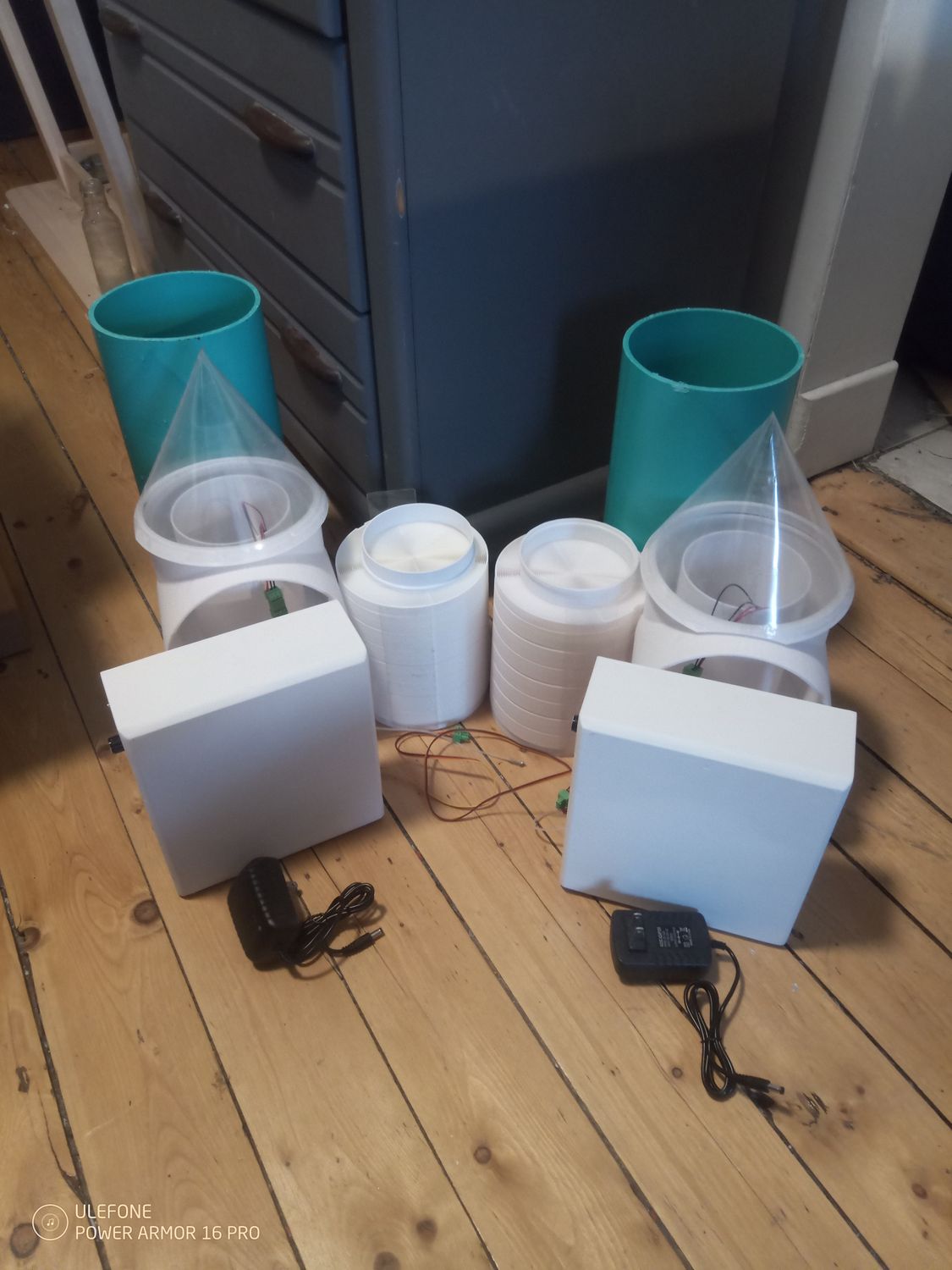TW4 Energy Recovery Ventilator pair
The TW4 Open Source Energy Recovery Ventilator is part of an emerging paradigm, a pioneering undertaking to prove that high quality equipment to make basic needs can be produced with digital manufacturing in a highly economically effective way.
It provides many times the return on investment of any comparable equipment.
This is a *pair* of TW4 (Through-Wall-4) OpenERV Energy recovery ventilator modules. Some assembly is of course required during installation. I think of a pair as a single ERV, but each module (half of the pair) is identical in hardware. The firmware is also identical except for the configuration file - one is the "Leader" and the other is the "Follower". They are meant to always work in pairs. See the learn more page for more information.
The price and performance compares very favorably with other energy recovery ventilators, such as the Blauberg Vento, which are $1700 + 15% tax = $1955 CAD or so for a pair. It gets far superior performance, with much higher flow rate, efficiency, lower noise, is equipped with high quality pressure sensors to regulate pressure in the face of static pressure and wind (increasing real world efficiency). It has a far better lifespan expectation. All of these things combined improve the rate of return on investment greatly. It has many other qualitative advantages, such as WiFi/home automation integration features.
There is the option of the heavy duty sound attenuator for blocking traffic noise, but this is optional and has not yet been field tested. See manual for details.
You can see the layer lines in the printed parts, but the interior cover can be provided sanded and painted, reducing the appearance of the lines, and matching the gloss etc. of the wall.
MPLA (Modified PLA) is mostly used, which does not deteriorate with time or exposure to water. It is not suitable for a service temperature above 55 degrees C, however, so not good for very hot areas.
I am discounting it greatly because it's in beta for a little while yet.
The sensible efficiency is 85% at a full 60 CFM, higher at lower flow rates. 60 CFM indicates the actual net total fresh air that is provided. These have both been tested with instrumentation, the efficiency has been tested with thermistors and data logging equipment, and the flow rate verified with a calibrated anemometer. Third party testing is ongoing.
Latent efficiency of uncoated exchangers is expected to be about 55%, average over the season. Water vapor condenses and then re-evaporates each cycle. The coated exchangers are expected to get about 85% latent efficiency at full power, but this has not yet been tested.
Noise level for each module in the pair is only 40 dBa after installation, at full power. Lower at lower power, of course, to the point of being nearly inaudible at one meter distance (~25 dBa) on low power (~15 CFM).
The pair can be controlled over MQTT, only power level changes are possible right now. This allows them to be controlled with an app on a phone or home automation systems.
For more details, including information on the installation process, see the manual.
Chose between hard wired or wall wart type power supplies using the product options. The wall wart type is shown in the pictures. This is recommended because no electrical work is needed.
Measure the thickness of your wall by using the area near a door or window to estimate pipe length you need. If you need pipes longer than 360 mm, you should select the "no pipes" option, and buy them separately, because shipping pipes longer than 360 mm is costly, because there is not enough space in the standard box. It is SDR-35 PVC pipe, which can be purchased at hardware stores, sometimes in short segments cheaply. The SDR-35 PVC label means precise dimensions and acceptable variation from those specified dimensions.
